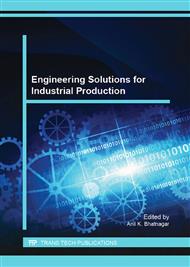p.449
p.453
p.458
p.464
p.468
p.474
p.479
p.484
p.491
The Study of AERMOD and ISCST3 for Area Source Simulation in Taiwan
Abstract:
This research compared the performance of ISCST3 model with the AERMOD simulated for six selected environmental impact assessment (EIA) cases which belongs four kinds of area in Taiwan (hotel, industrial area, road, reservoir). The influence of different terrain (complex or flat) and land use (countryside or urban) was then determined for the two air dispersion models.The results of the cross analysis indicated that there is no significant difference between of the complex terrain and flat terrain on the incremental concentration ratio. However, the biggest difference of incremental concentration of particulate matter (PM) is in the simulation for case in urban (ISCST3 is 1.96 times higher than AERMOD), and the gas pollutants in ISCST3 of incremental concentration simulation results ratio reach to 65.38% more than others. The highest incremental concentration of ISCST3 is 2.67 times to AERMOD. The concentration in AERMOD higher than that in ISTSC3 was 20% in the total 40 simulation values, due to the difference between their vertical diffusion simulations. The ratio of maximum incremental concentration in AERMOD was higher than ISCST3 by 42.5%. By the cross match of these incremental concentration, the ratio that maximum incremental concentration in AERMOD being less than ISCST3 was 22.5% after diffusion, which shows that the sinking rate in AERMOD is faster than ISCST3.The simulation of AERMOD considers more in complex terrain and surface characteristics. It uses the stratified flow over complex terrain and considers the effect in characteristics of the Earth’s surface. Thus, the theoretical basis of AERMOD is solider than ISCST3, and its simulation has more reliability.
Info:
Periodical:
Pages:
491-495
Citation:
Online since:
July 2015
Authors:
Keywords:
Price:
Сopyright:
© 2015 Trans Tech Publications Ltd. All Rights Reserved
Share:
Citation:


